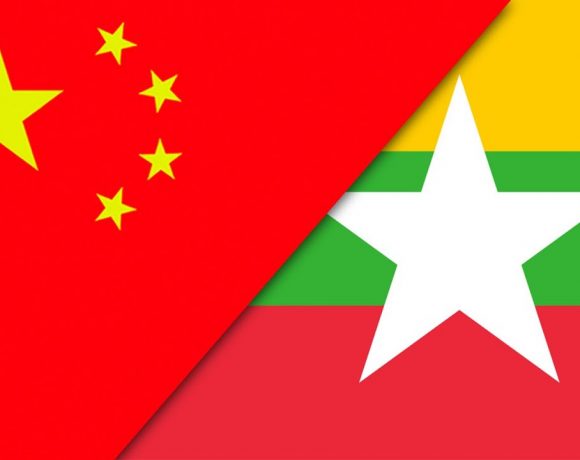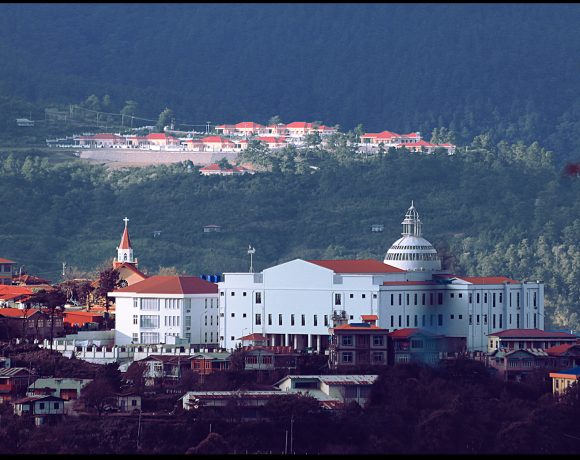Challenges of Ethnic Language Media In Burma/Myanmar

Challenges of Ethnic Language Media In Burma/Myanmar
Introduction
The role of media, as ‘the fourth pillar’ of the nation-state is important for country’s transition process. Media freedom (media awareness) in Burma got improved when transitions process started after the general election in decades was held in 2010. After the quasi-civilian democratic government was established in Burma in March 2011, the government ended 50 years of strict press control and lifted restriction on news publication in ethnic languages in December 2012. Alison (2014) stated censorship was eliminated; a number of imprisoned bloggers and journalists were released; private daily papers are permitted to publish; some political opinions or comments are allowed in the publications. A distribution of newspapers, however, in the isolated and underdeveloped ethnic areas like Chin State is a big challenge.
On the one hand, although Burmese is the official national language, the fact that Chin State is one of the most remote and isolated regions in Burma has meant that the vast majority of Chin people cannot read or speak Burmese. This is where the importance of the role of Chin-language media comes in promoting freedom of information/expression and media awareness in the Chin society. I believe that peace and sustainable transition to democracy can be achieved only if the people have a basic understanding of human rights, democracy and the root cause of national conflicts. This is what I learnt from our short existence towards promoting freedom of information/expression and media awareness in Chin State. Despite the relaxation of media restrictions, on the other hand, numbers of publications in ethnic regions are few especially in Chin State and it could not reach by the mainstream media, while those that have been set up face many hurdles and difficulties including shutter by the state government and the financial constraint.
Media Restriction 1962-2012
Burma’s military government, which first came to power in 1962, suppressed media in general and local media in particular for decades. Under the military, the Burmese language—spoken by the majority in central Burma—became dominant in government institutions and in the education system, which banned teaching in local ethnic languages. Burma’s ethnic groups, which form about 40 percent of the population, were deprived of the possibility to study and write in their mother tongue (James; Aung, 2014). Decades of information blackout and restriction of freedom of expression under successive Burmese dictatorships have deprived the Chins of the knowledge and crucial information that directly affect their day-to-day existence. This has been compounded by official government, as stated, ban on learning and teaching Chin indigenous languages, which effectively deprived them of their social, economic and cultural rights for the last six decades.
Consequently, in addition to having low literacy rate, Chin State is the least developed state in all of Burma, with over 73 percent of its population living below the poverty line, according to the United Nations Development Program (UNDP, 2012). However, thanks to the efforts of religious and social organizations, for teaching mother tongue inside and outside churches during this long period, more Chin people can still read and write in their languages. Therefore, to tackle disinformation and contribute meaningfully to the development of an informed and responsible citizenry in Chin State, there needs professional and responsible Chin-language media. As I have mentioned, this is where the importance of Chin-language media not only for the above mentioned but also for promoting Chin literature, culture and identity through mass media.
Emergence of Chin Media for Promoting Freedom of Information and Media Awareness
Following the relaxation of restrictions on media freedom in Burma, alongside hundreds of Burmese-language media organizations, a number of Chin-language media has also emerged. The Chinland Post under Fidi Group, where I worked is an independent news agency in Chin-language media outlets that also emerged. The Chinland Post journal published in the most-widely spoken local language: Hakha, which is used in four townships in Chin State, as well as parts of Sagaing Region. Despite its short existence, we have made positive contributions to the Chin public through the provisions of news and information that are otherwise previously inaccessible, as well as hard-hitting investigative reporting, which has exposed government mismanagement and corruptions in different contexts, documented and published human rights violation cases in Chin State.
However, compared to the mainstream Burmese-language media, which have wide readership, tremendous challenges exist for the Chin-language media in terms of being able to finance the publication through marketing alone. Also, one problem created by the decades of suppression of ethnic-language education is that the readership for ethnic-language newspapers is limited. As mentioned above, distributions of newspapers in the isolated and underdeveloped ethnic areas are still a challenge too which indirectly impacts on the sustainability of the newly emerged media organizations.
The Chinland Post got legal permission to publish newspapers in ethnic Chin language for the first time since 1962, but we can’t say that the publications are publishing widely now. The Chinland Post was the second ethnic media that got permission from the government after the other ethnic Mon media. As stated earlier, one of the main goals is to take advantage of recent media openings that allow ethnic minorities to print publications in native languages and to engage actively the public and key stakeholders to encourage greater media awareness.
The recent opening up of the country and relaxation of the media in particular has a few impacts in the country, however, significant mistrust remains between the government and the people after years of control by the military. This is especially in area of the unequal distribution of resources and the lack of overall accountability. Therefore, one of our most important reason for choosing this approach is ‘to build trust and reduce fear between citizen and state’ through media-as-tool to gain awareness about government officials, civil society and media itself. So that, they could gain knowledge and engage with each other to increase awareness about each group’s role and in hoping that these initiatives could continue to erode the negative attitudes and aggressive actions between citizens and the government in transition process.
As mentioned, media works and publishing news journal in Chin-language, in very first initial step, is a challenge as people are not aware of reading newspaper and the impact of its reflection. However, the experience that we have in the short existence is about the progress in readership, people are more aware of reading news and became to know how to utilize media not only to be informed, educated and entertained but also to express their voice and use their right to freedom of expression.
Conclusion
In conclusion, we can say that during the transition period, all media have become bolder in criticizing towards the government and more effective in sharing the information to the public. Concerning with the access to information with government departments, it seems to get more open because they will give the information when they want to, and the journalists can feel safe from getting arrested for raising the questions unfavorable to government officials. This can be counted as a positive effect from the changes. In short, media in Burma especially in Chin under new trend in this transition period may have many requirements and weak points in terms of professionalism and capacity which need time to build up by learning from the new experience, so the government should support media development and press freedom to be in line with the democratic system because press freedom and right to access to information are the characteristics of democratic countries. – By Salai Sang Hnin Lian
References
Aung, S.Y., 2014. After Reforms Ethnic Media Emerge in Burma, But Challenges Remain [Online] Available through:http://www.irrawaddy.org/media/reforms-ethnic-media-emerge-burma-challenges-remain.html [Accessed on 22 February, 2015]
BBC, 2014. Timeline: Reforms in Myanmar [Online] Available through: http://www.bbc.com/news/world-asia-16546688 [Accessed on 22 February, 2015]
James, K. 2014. Myanmar’s ethnic media finding its voice, but faces hurdles, Press Freedom. [Online] Available through: http://onmedia.dw-akademie.de/english/?p=20815 [Accessed on 23 February, 2015]
Nyunt, O., 2014. Reformation of Private News Media in Myanmar: Press Performance and Freedom, M.A Thesis (Unpublished), Chulalongkorn University, Bangkok.
Salai Sang Hnin Lian is a Chin journalist and human rights activist. He is currently completing an M.A in Human Rights Studies at Mahidol University in Bangkok, Thailand. – Editor ([email protected])






